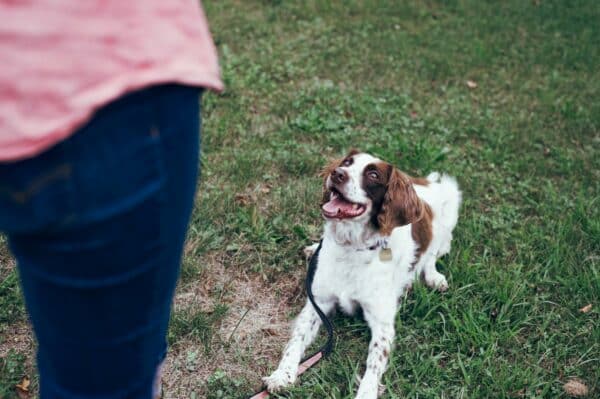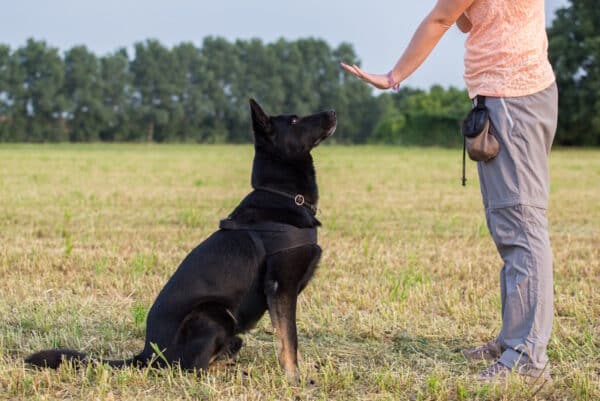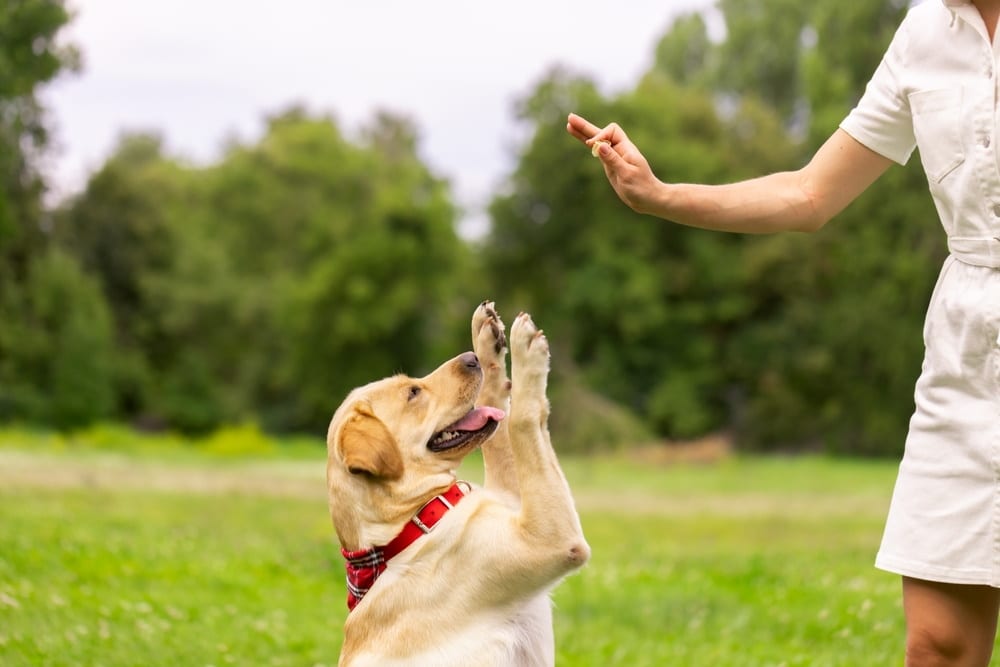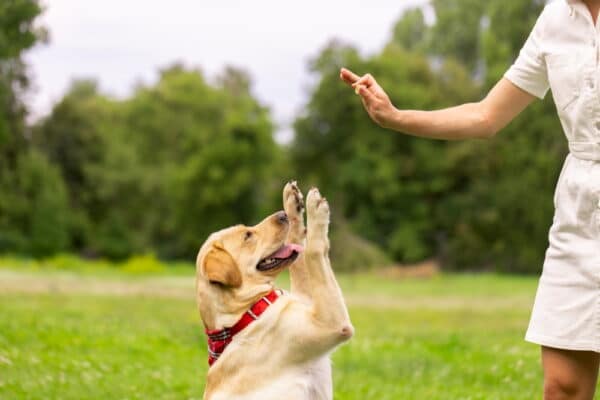A lot of the lingo of behavior can be confusing for the layman (and even some professionals!). Colloquial definitions of behavioral terms are often at odds with the scientific definition of these terms, inhibiting effective communication and common understanding between pet owners and pet trainers.
In a previous blog, The Two Switches of Operant Conditioning, I shared with our readers how I explain these terms to my own clients. I want to be able to explain the four quadrants of operant conditioning in terms that are easily understood and in less than sixty seconds.
This tendency to misunderstand each other goes both ways. Not only are behavior professionals using terms which are unfamiliar to pet owners, pet owners use terms which mean little to behavior professionals. Most commonly, these terms are reward and correction.
From my experience, pet owners think “rewards” are consequences they provide after a behavior to let their dog know that they like that behavior. Rewards can include hugs, kisses, scratches, “good boys”, treats, toys, etc. Corrections are things that pet owners do when their dog offers a behavior they don’t like. Corrections can include sound aversives, verbal reprimands, leash pops, electric shock, “dominance downs,” or even a harsh stare.
What the terms “reward” and “correction” have in common are that they both focus on the person’s perspective of the event. They’re things that we think dogs like or don’t like.

I’ve seen innumerable times where dogs absolutely do not like the “rewards” that people think are reinforcing. Many dogs don’t like hugs or crave physical contact at all. (If this is your dog, don’t give up hope – through classical conditioning, you can actually train your dog to enjoy physical contact and petting – a good trainer can show you how.) Some dogs actively show signs of stress and avoidance at things like pats on the head or a big hug. Many dogs that may normally like these things while you are relaxing in the house do not desire them within the contact of a training session, at the classroom, or at the dog park. While Mokie loves a good snuggle after a long walk, if I tried to lie on the ground with her, spooning and scratching her belly after a good performance at the classroom she’d undoubtedly look at me as if I’d lost my mind, then find something better to do.
In fact, I’d bet the classroom that Mokie would be less likely to offer me that behavior on a subsequent repetition in that environment. Which means that not only have my hugs and kisses not reinforced the behavior I liked, they functioned as punishers!
On the other hand, I’ve seen lots of people demonstrate use of “corrections” that did not function as punishers. I’ve seen dogs return to pulling immediately after a leash pop, dogs that continued jumping or biting, happily oblivious as their owners screamed “NO! NO! NO! NO! NO!” Many handlers have been “correcting” their dogs in this manner for a long time without seeing any improvement (in fact, often seeing a worsening in) behavior.
Trainers know that it doesn’t matter what we think of the stimulus. What matters is the effect of the stimulus on the relative frequency of the behavior. Does it make the behavior more likely? Then it is reinforcement. Does the stimulus make the behavior less likely? Then it is punishment.

If you are constantly issuing your dog corrections and the behavior is not stopping or reducing in frequency, you’re not “correcting” or “punishing” the behavior, it’s just nagging. More than likely, the dog is simply building up a punishment callous. One of the problems with punishment is that in order to use it truly effectively, the punishment must be of strong enough intensity to halt the behavior completely in very few repetitions. If you’ve been giving the same “corrections” for weeks, months, or years with no reduction in frequency of the unwanted behavior, the behavior has not been punished. By its very definition, punishment reduces the frequency of behavior.
Similarly, if you are always rewarding your dog with a hug, a kiss, a Cheerio, or a “good boy” when he returns on a recall and you notice that his recall does not become more reliable, more rapid, more enthusiastic, the recall behavior has not actually been reinforced. By its definition, reinforcement increases the frequency of behavior.
Rewards and corrections are what we humans think dogs should want to work for or avoid. Reinforcement and punishment are what the dog thinks is worth working for or working to avoid. If you’ve been trying a technique for weeks and not seeing any improvement, stop and think to yourself – am I rewarding or reinforcing? Examine your dog’s response to the reward carefully and if you are not seeing improvement, explore new avenues of reinforcement. Once you are focused on giving the dog what he wants instead of what you think he should want, your training progress will come much more rapidly and with less frustration for both you and your best friend.
Featured Image Credit: sergey kolesnikov, Shutterstock









